Posted by Dave Bull at 6:52 PM, May 17, 2007
Continued from [River in Summer - 8] | Starting point of the thread is [River in Summer]

This will be the routine for quite some time now ... day after day of work on these detailed colour blocks. Here's a set of photos showing the drill ... First, the block with the kyogo pasted face down:
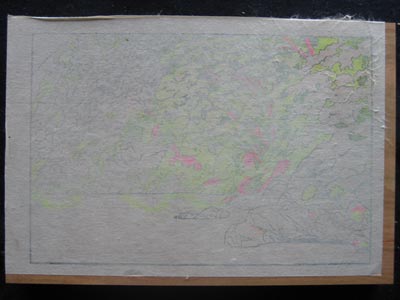
The lines are not so clearly visible. In the 'old days' the carvers used an extremely thin paper to make these transfers, but I have learned that I just don't have their skill at getting thin kyogo pasted down without distortion.
So I use a somewhat thicker paper - it's a type called hodomura. It seems quite dimensionally stable, which is the most important thing I want at this point. Any stretching, expansion/shrinkage, or other distortion of these sheets between the time they are printed and the time they are pasted down, makes subsequent registration impossible.
I also watch the weather. I printed these on a bright sunny day, spent the next day or so working out the separations and colouring in the required areas, and then got them pasted down before the weather changed. If I wait too long, and the weather becomes rainy, the sheets will expand from the extra humidity in the air, and I'll be in trouble.
The next step is to rub with moistened fingers, until the fibers of the paper start to pull off. (Actually, you can see in the top right corner of the previous photo, where I started to do this before remembering to take the photo first ...)
Again, this is slightly different from the procedure followed by the men in older times. They did this rubbing while the paper was still damp from being glued down; the moisture from the glue made the paper soft, and the fibres pull off very easily. Unfortunately for those of us with less skill/experience, when you rub with the glue still damp, it is very easy to cause the paper to slip slightly on the wood surface. You don't realize what you've done, but when printing begins ... oops!
So I play it very safe; I let the glue dry thorougly first, and then peel later. It's more troublesome this way, as the paper now has glue in the fibres, but it minimizes problems later. Here's the same sheet after I've rubbed away a lot of the fibres:
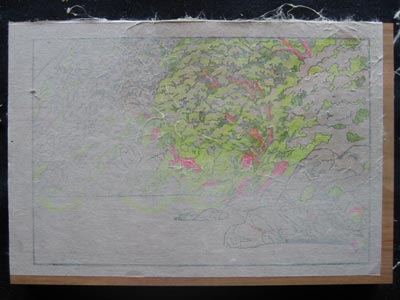
The lines are now much more clearly visible, but there is an additional step to take that makes things even easier for carving - I take a dab of camellia oil, and rub it over the area that I am about to carve:
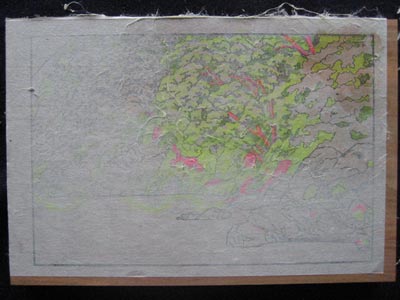
It's not such a good idea to rub oil over a larger area, because it just starts to get a bit messy, and it can also loosen the glue holding the paper down. Just work a couple of 'minutes' ahead of the carving. Here's a zoom-in on the corner where I will start carving:
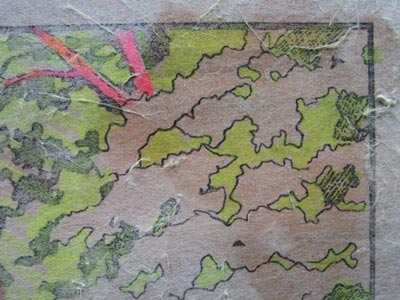
And here we are, after a few minutes work ...
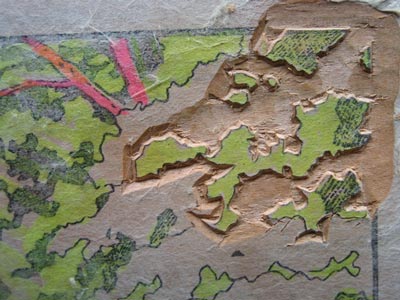

The thread continues in [River in Summer - 10] ...
